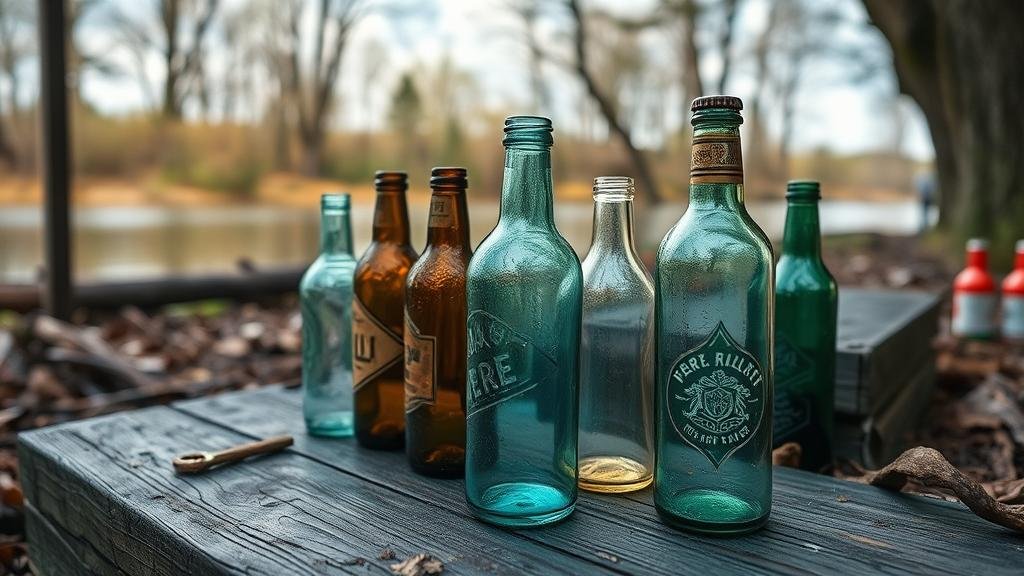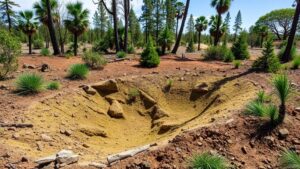Recovering Rare Bottles in Forgotten Picnic Areas Along Rivers
Recovering Rare Bottles in Forgotten Picnic Areas Along Rivers
In recent years, the practice of bottle digging and recovery has garnered significant interest among collectors, historians, and outdoor enthusiasts. Forgotten picnic areas along rivers serve as intriguing sites for unearthing rare bottles that offer historical insights and monetary value. This article aims to provide a comprehensive overview of the methods, significance, and ecological implications of recovering these artifacts.
The Historical Context of Bottle Recovery
To understand the allure of bottle recovery, one must appreciate the historical context. art of bottle production and consumption emerged prominently in the late 19th and early 20th centuries, intersecting with burgeoning recreational activities such as picnics. Many people, seeking leisure along rivers, would leave behind remnants of their gatherings, including bottles.
For example, bottles from the early 1900s, such as soda bottles or medicine bottles, often carry distinct markings that allow historians to trace their origins. Collector interest revolves around bottles from specific brands, regions, or unique design elements. In some cases, these artifacts can fetch thousands of dollars at auction.
Finding Forgotten Picnic Areas
Identifying promising locations for bottle recovery requires a combination of historical research and field exploration. Potential areas can often be found by:
- Reviewing old maps to locate erstwhile picnic sites.
- Consulting local historical societies for records of popular gathering spots.
- Engaging with community forums to uncover personal narratives that may hint at hidden treasures.
Riverside parks and natural reserves are often hotspots due to their historical use for leisure activities. A specific example is the recovery efforts along the banks of the Potomac River, where picnic-goers from the 1920s frequently left behind an array of bottles.
Techniques for Bottle Recovery
Once a potential site is identified, practitioners should equip themselves with the appropriate tools and techniques for successful recovery. Recommended tools include:
- Shovels and spades for digging.
- Brushes to clean surfaces of bottles.
- Protective gloves to ensure safety.
The recovery process typically involves careful excavation of soil layers, which may hold bottles previously discarded. Professionals often utilize a systematic grid method to ensure a comprehensive search, minimizing disturbance to the surrounding ecosystem.
Historical and Monetary Value of Recovered Bottles
The historical value of recovered bottles is immense, as they encapsulate stories of past communities. Many bottles feature unique labeling, intricate designs, and specific colors that indicate their era and origin. For example, a rare embossed bottle from a defunct soda company may provide insights into local industry trends.
From a monetary perspective, the value of rare bottles can be significant. Sales data from auction houses illustrate this point; certain bottles have sold for upwards of $20,000, such as the rare “Coca-Cola blood type†bottle from the 1910s. As demand drives market dynamics, the rarity and condition of the bottle play crucial roles in determining its market value.
Environmental Considerations
While recovering rare bottles can yield exciting finds, it is essential to acknowledge and mitigate potential environmental impacts. Disturbing natural habitats can negatively affect local wildlife and ecosystems. So, adhering to responsible excavation practices is critical. Practitioners should:
- Use tools that minimize disruption to the soil.
- Avoid areas known to host endangered plant species.
- Practice Leave No Trace principles to maintain ecological balance.
Also, participating in organized cleanup events often allows collectors to recover bottles while contributing to environmental restoration efforts.
Conclusion and Actionable Takeaways
To wrap up, recovering rare bottles from forgotten picnic areas along rivers represents a fusion of history, ecology, and entrepreneurship. This rewarding pursuit offers collectors not only tangible artifacts of the past but also a deeper connection to the cultural practices of earlier generations. As interest continues to grow, aspiring bottle diggers are encouraged to:
- Conduct thorough research to identify potential sites.
- Equip themselves with the right tools and knowledge for responsible recovery.
- Engage with local communities and environmental organizations to foster a sustainable practice.
By doing so, enthusiasts can ensure their legacy contributes positively to both the historical record and the environment.



